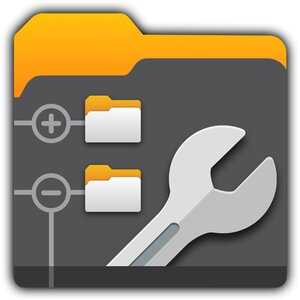MediaMonkey: The Ultimate Music and Video Management Software
Do you have a massive music and video collection scattered across multiple devices and platforms? Do you find it challenging to keep track of all your media files, and do you struggle to organize them in a meaningful way? If so, then you need MediaMonkey, the ultimate media management software that can help you take control of your digital library.
MediaMonkey is a feature-rich application that enables you to manage your music and video collections like a pro. Whether you have a few hundred or tens of thousands of files, MediaMonkey can handle it all. With powerful tools for tagging, sorting, and searching, you can quickly find the media you want, create custom playlists, and manage your entire library with ease.
In this article, we’ll take a closer look at what MediaMonkey has to offer, including its features, benefits, and pricing. We’ll also explore how it compares to other media management software, and we’ll provide some tips and tricks for getting the most out of this powerful tool.
Features of MediaMonkey
MediaMonkey is packed with features that make it one of the most versatile media management software on the market. Here are some of the standout features:
- Media player: MediaMonkey comes with a built-in media player that supports most audio and video formats. You can play, pause, skip tracks, and adjust the volume from within the application. The player also features advanced playback controls, including playback speed, volume leveling, and crossfade.
- File management: MediaMonkey makes it easy to organize and manage your media files. You can add, edit, and delete files, and you can also move or copy them between folders. MediaMonkey supports a wide range of file formats, including MP3, FLAC, AAC, WMA, and OGG.
- Tagging: MediaMonkey has powerful tools for tagging your music and video files. You can add metadata such as artist, album, track number, and genre, and you can also add custom tags. MediaMonkey can also look up and download album art, lyrics, and other metadata from online sources.
- Auto-organize: MediaMonkey’s auto-organize feature allows you to automatically sort and rename your media files based on their metadata. You can create custom rules to organize your files by artist, album, genre, or any other criteria.
- Playlists: MediaMonkey’s playlist feature allows you to create custom playlists from your media library. You can add, remove, and reorder tracks, and you can also save and load playlists. MediaMonkey also supports smart playlists that automatically update based on your criteria.
- Syncing: MediaMonkey allows you to sync your media files to a wide range of devices, including smartphones, tablets, and media players. You can choose which files to sync, and you can also set up automatic syncing.
- CD ripping and burning: MediaMonkey can rip CDs to various formats, including MP3, FLAC, and AAC. You can also burn CDs and DVDs, and you can create and burn ISO images.
Benefits of Using MediaMonkey
There are many benefits to using MediaMonkey to manage your music and video collections. Here are some of the key advantages:
- Centralized library: MediaMonkey allows you to keep all your media files in one place, regardless of where they are stored on your devices. This makes it easy to find and manage your files, and it also frees up space on your devices.
- Custom organization: MediaMonkey’s auto-organize feature allows you to create custom rules for how your files are organized. This can save you time and effort when adding new files to your library, as they will be automatically sorted according to your preferred criteria.
- Advanced tagging: MediaMonkey’s tagging features allow you to add detailed metadata to your media files, making it easier to find and organize them. You can add information such as album art, lyrics, and composer credits, and you can also add custom tags to categorize your files in unique ways.
- Custom playlists: MediaMonkey’s playlist feature allows you to create custom playlists for any occasion. Whether you want a playlist for working out, relaxing, or partying, MediaMonkey has you covered. You can also create smart playlists that update automatically based on your preferred criteria.
- Syncing: MediaMonkey’s syncing feature makes it easy to keep your media files up to date across all your devices. You can choose which files to sync and which devices to sync them with, and you can also set up automatic syncing to ensure your library is always up to date.
- CD ripping and burning: MediaMonkey’s CD ripping and burning features allow you to digitize your CD collection and create backup copies of your media files. This is particularly useful for users who want to access their media files on devices that don’t have a CD drive.
- Customization: MediaMonkey is highly customizable, with a range of settings and options that allow you to personalize the application to suit your preferences. You can customize the layout, skin, and appearance of the application, and you can also configure various settings to optimize performance and functionality.
MediaMonkey vs. Other Media Management Software
MediaMonkey is not the only media management software available, and it’s worth considering how it compares to other options on the market. Here’s a comparison of MediaMonkey to some popular alternatives:
- iTunes: iTunes is one of the most popular media management software, particularly among Apple users. However, it has some limitations, including a limited range of supported file formats and a lack of advanced organization and tagging features. MediaMonkey offers more flexibility and functionality, particularly for users with large and diverse media collections.
- Windows Media Player: Windows Media Player is a basic media player and management software that comes pre-installed on Windows computers. However, it lacks many of the advanced features of MediaMonkey, such as custom organization and advanced tagging. MediaMonkey is a much more powerful tool for users who want to manage and organize their media collections in a meaningful way.
- foobar2000: foobar2000 is a highly customizable media player and management software. However, it can be complex and difficult to use for users who are not familiar with its interface. MediaMonkey offers a more user-friendly and intuitive interface, while still providing advanced features for managing and organizing media files.
- Winamp: Winamp is a classic media player and management software that has been around since the late 1990s. However, it has not been updated in several years, and it lacks many of the advanced features of MediaMonkey. MediaMonkey offers a more modern and users who want to manage and organize their media collections.
Overall, MediaMonkey offers a powerful and flexible solution for managing and organizing media files. Its advanced organization and tagging features, custom playlists, syncing, and CD ripping and burning make it a valuable tool for users with large and diverse media collections. While there are other media management software available, MediaMonkey stands out for its user-friendly interface and comprehensive feature set.
MediaMonkey’s Key Features in Detail
To better understand the benefits of MediaMonkey, let’s take a closer look at its key features.
-
Media Library
The Media Library is the heart of MediaMonkey, where you can manage and organize all of your media files. You can add media files to the library manually or have them automatically added from specific folders on your computer. You can also set MediaMonkey to monitor folders for new files, so that any new media files are automatically added to the library.
The Media Library offers a range of customization options, including the ability to sort and filter media files according to different criteria, such as artist, album, genre, and rating. You can also customize the columns displayed in the Media Library, so that you can see the information that’s most important to you.
-
Advanced Tagging
MediaMonkey’s tagging features allow you to add detailed metadata to your media files, making it easier to find and organize them. You can add information such as album art, lyrics, and composer credits, and you can also add custom tags to categorize your files in unique ways.
One of the most useful features of MediaMonkey’s tagging system is its ability to automatically tag media files using online databases. MediaMonkey can search online databases, such as MusicBrainz and FreeDB, to automatically tag your media files with accurate information. This saves you the time and effort of manually tagging your files, and ensures that your files are accurately labeled.
-
Custom Playlists
MediaMonkey’s playlist feature allows you to create custom playlists for any occasion. You can create playlists based on specific criteria, such as artist, album, or genre, or you can create playlists manually by dragging and dropping media files.
One of the most useful features of MediaMonkey’s playlist feature is its ability to create smart playlists. Smart playlists are dynamic playlists that automatically update based on specific criteria. For example, you could create a smart playlist that includes all of your favorite songs that were released in the last year, or a smart playlist that includes all of your highest rated rock songs.
-
Syncing
MediaMonkey’s syncing feature makes it easy to keep your media files up to date across all your devices. You can choose which files to sync and which devices to sync them with, and you can also set up automatic syncing to ensure your library is always up to date.
One of the most useful features of MediaMonkey’s syncing feature is its ability to sync with a range of devices, including iPods, iPhones, Android devices, and more. This means that you can easily transfer your media files to your portable devices, so that you can enjoy your music and videos on the go.
-
CD Ripping and Burning
MediaMonkey’s CD ripping and burning features allow you to digitize your CD collection and create backup copies of your media files. This is particularly useful for users who want to access their media files on devices that don’t have a CD drive.
MediaMonkey’s CD ripping feature is highly customizable, allowing you to choose the format and quality of your ripped files. You can also add detailed metadata to your ripped files, including album art, track titles, and artist information.
-
Customization
MediaMonkey is highly customizable, with a range of settings and options that allow you to personalize the application to suit your preferences. You can customize the layout, skin, and appearance of
the application, as well as the behavior of certain features.
One of the most useful customization options in MediaMonkey is its ability to support a range of third-party plugins. These plugins allow you to extend the functionality of MediaMonkey, adding features such as visualizations, advanced tagging, and more.
Another useful customization option is MediaMonkey’s scripting engine. MediaMonkey’s scripting engine allows users to create custom scripts that automate certain tasks or add new features to the application. This is particularly useful for power users who want to tailor the application to their specific needs.
MediaMonkey’s Advantages and Disadvantages
Like any software, MediaMonkey has its advantages and disadvantages. Let’s take a closer look at what these are.
Advantages:
- Comprehensive Feature Set – MediaMonkey offers a comprehensive set of features for managing and organizing media files, including advanced tagging, custom playlists, syncing, and CD ripping and burning.
- User-Friendly Interface – MediaMonkey has a user-friendly interface that is easy to navigate, making it accessible to users of all skill levels.
- Customizable – MediaMonkey is highly customizable, allowing users to personalize the application to suit their preferences and extend its functionality with third-party plugins and custom scripts.
- Syncing with Multiple Devices – MediaMonkey’s syncing feature allows users to easily keep their media files up to date across multiple devices, including iPods, iPhones, and Android devices.
Disadvantages:
- Learning Curve – While MediaMonkey’s interface is user-friendly, there is still a learning curve when it comes to mastering all of its features.
- No Free Version – While MediaMonkey offers a 30-day free trial, there is no free version of the software available for users who don’t want to pay for a license.
- Resource Intensive – MediaMonkey can be resource-intensive, particularly when it comes to syncing large media libraries with multiple devices.
- Limited Media Format Support – While MediaMonkey supports a range of media formats, there are some formats that it doesn’t support, such as certain lossless audio formats.
Conclusion
MediaMonkey is a powerful and flexible media management software that offers a range of features for managing and organizing media collections. Its advanced organization and tagging features, custom playlists, syncing, and CD ripping and burning make it a valuable tool for users with large and diverse media collections.
While there are other media management software available, MediaMonkey stands out for its user-friendly interface and comprehensive feature set. Its ability to sync with multiple devices and support for third-party plugins and custom scripts also make it a highly customizable solution.
Overall, if you’re looking for a powerful and flexible media management software that can handle even the largest media collections, MediaMonkey is definitely worth considering.















Leave your rating for the product